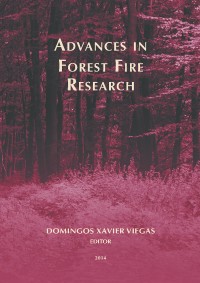Please use this identifier to cite or link to this item:
https://hdl.handle.net/10316.2/34329| Title: | A Landsat-TM/OLI algorithm for burned areas in the Brazilian Cerrado: preliminary results | Authors: | Melchiori, Arturo E. W. Setzer, Alberto Morelli, Fabiano Libonati, Renata Cândido, Pietro de Almeida Jesús, Silvia C. de |
Keywords: | Fires;Burned area;Automatic extraction;Landsat;Cerrado | Issue Date: | 2014 | Publisher: | Imprensa da Universidade de Coimbra | Journal: | http://hdl.handle.net/10316.2/34013 | Abstract: | Accurate burned area information is required and of particular interest for the scientific communities dealing with land use and climate changes. Currently, due to the very broad spatial extent and the limited accessibility of some of the largest regions affected by fire, instruments on-board satellites provide the only available operational systems capable to collect cost-effective burned area data. This paper presents the initial results of an algorithm for automatic extraction of burned area scars using Landsat TM and OLI imagery in the Cerrado (savannah) biome of Brazil. Development and validation tests were conducted for the “Jalapão” region, which has been intensely affected by fire in the last years; during the 2010 dry season, it accounted for 60% of all active fire pixels detected in the Cerrado. A series of Landsat TM and /OLI 52 scenes (path/row: 221/067) covering the period of 2000 - 2013 was used. Input images were accepted only with cloud cover up to 10%, and the maximum period of time between consecutive scenes was up to 1 month. Composite images with differences in NDVI (dNDVI) and NBRL (dNBRL) of consecutive scenes were used to identify fire scars. The algorithm computes and filters the rate of change in dNDVI and dNBRL indexes, relative to the pre-fire condition. The value of the dNBRL change is then used in the calculation of the burned area mask. Results of the automatic extraction were evaluated against maps of burned scar produced by visual photo interpretation of the composite images for the reference period of 2004 - 2010. Omission and commission errors were obtained, and the reliability of the algorithm and the burned area match levels were calculated for the image series. Omission Errors ranged from 4.8% to 21.0%, and Commission Errors from 2.3% to 24.1%. Reliability of the Algorithm and Burned Area Match varied from 75.8 % to 97.2%, and from 79 to 95.2%, respectively. These values are comparable to the best reported in the literature for other regions. Commission errors were associated mainly to clouds and their shadows in the images; agricultural practices were another source of error. Detailed error analysis and results are included in the text. The algorithm developed is currently being implemented for operational and automatic generation of burned scar maps at a regional scale, particularly for conservation areas. | URI: | https://hdl.handle.net/10316.2/34329 | ISBN: | 978-989-26-0884-6 (PDF) | DOI: | 10.14195/978-989-26-0884-6_143 | Rights: | open access |
| Appears in Collections: | Advances in forest fire research |
Files in This Item:
| File | Description | Size | Format | |
|---|---|---|---|---|
| 978-989-26-0884-6_143.pdf | 1.69 MB | Adobe PDF |  |
Items in DSpace are protected by copyright, with all rights reserved, unless otherwise indicated.
